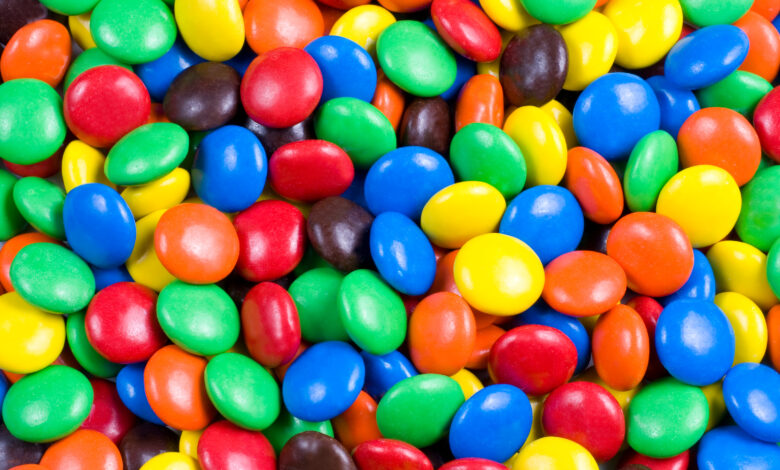Sweet Memories: Exploring the Stories Behind 7 Iconic American Candies

America’s love affair with candy runs deep, with the confection industry commanding a staggering $13 billion annually. From chocolates to caramels, gummies to hard candies, these sweet treats have delighted our taste buds and played significant roles in our history and culture. Let’s explore the fascinating stories behind seven iconic American candies that have shaped our collective sweet tooth through the decades.
Candy Corn (1880s):
Candy corn, molded from mellow creme in the shapes of pumpkins and agricultural products, gained popularity in the early 20th century. Despite initial associations with cheap animal feed, the Goelitz Candy Company rebranded it as a Halloween staple. By the 1950s, candy corn became America’s most highly advertised Halloween treats, selling over 35 million pounds annually and sparking debates over its divisive taste and texture.
Hershey’s Milk Chocolate Bar (1900):
Milton Hershey’s milk chocolate bar, introduced in 1900, marked a turning point in American chocolate consumption. It was designed to suit the American palate and emphasized milk chocolate flavors, and it became a national favorite. The Hershey Company’s partnership with the U.S. military during World War II further solidified its status as an iconic American candy, providing soldiers with a taste of home and energizing them on the battlefield.
Baby Ruth (1921):
The Baby Ruth candy bar, rebranded by Otto Schnering in 1921, shares a curious history. Although its name closely resembles baseball legend Babe Ruth, Curtiss Candy Company claimed it was named after Grover Cleveland’s daughter. The candy’s popularity soared, becoming one of the world’s best-selling bars and showcasing the power of celebrity endorsements and savvy marketing strategies.
Twizzlers (1929):
Twizzlers, introduced in 1929 by the Young & Smylie Confectionary Company, gained fame as licorice spirals. Acquired by Hershey in 1977, Twizzlers became a cultural phenomenon, loved for their chewy texture and unique taste. Surprisingly, Twizzlers played a role in diplomatic negotiations, providing comfort and distraction during tense nuclear reduction talks, highlighting their unexpected impact beyond the realm of confectionery.
M&Ms (1941):
The creation of M&Ms can be attributed to Forrest Mars, who observed soldiers eating chocolate-covered pellets during the Spanish Civil War. Mars patented his candy-coating process, preventing melting and producing durable and portable candies. The U.S. military recognized their value and formed an exclusive partnership with Mars during World War II, further solidifying M&M’s status as a beloved treat. In 1981, M&M made history as the first candy to journey into space, capturing the imagination of millions.
Gobstoppers (1976):
The fictional Everlasting Gobstopper from Roald Dahl’s book “Charlie and the Chocolate Factory” became a reality after Quaker Oats financed the film adaptation. Initially facing challenges, these multi-layered jawbreakers gained popularity over time and played a crucial role in diversifying the candy market. The enduring appeal of Gobstoppers is a testament to their longevity and the nostalgic memories they evoke for generations of candy lovers.
Sour Patch Kids (1970s):
Originally known as Mars Men, Sour Patch Kids was rebranded to capitalize on the popularity of Cabbage Patch Kids dolls. Their unique combination of sweet and sour flavors became a sensation, making them the top-selling jelly candy in America. The candy’s journey from a space-themed concept to a beloved treat showcases the power of rebranding and the ability to capture the taste buds and imaginations of candy enthusiasts across the country.
These seven iconic American candies have satisfied our cravings and contributed to our cultural fabric. From Halloween traditions to military rations, they have left an indelible mark on our taste buds and collective memory. As we indulge in these timeless treats, we celebrate their enduring legacy and the sweet moments they have brought to our lives.